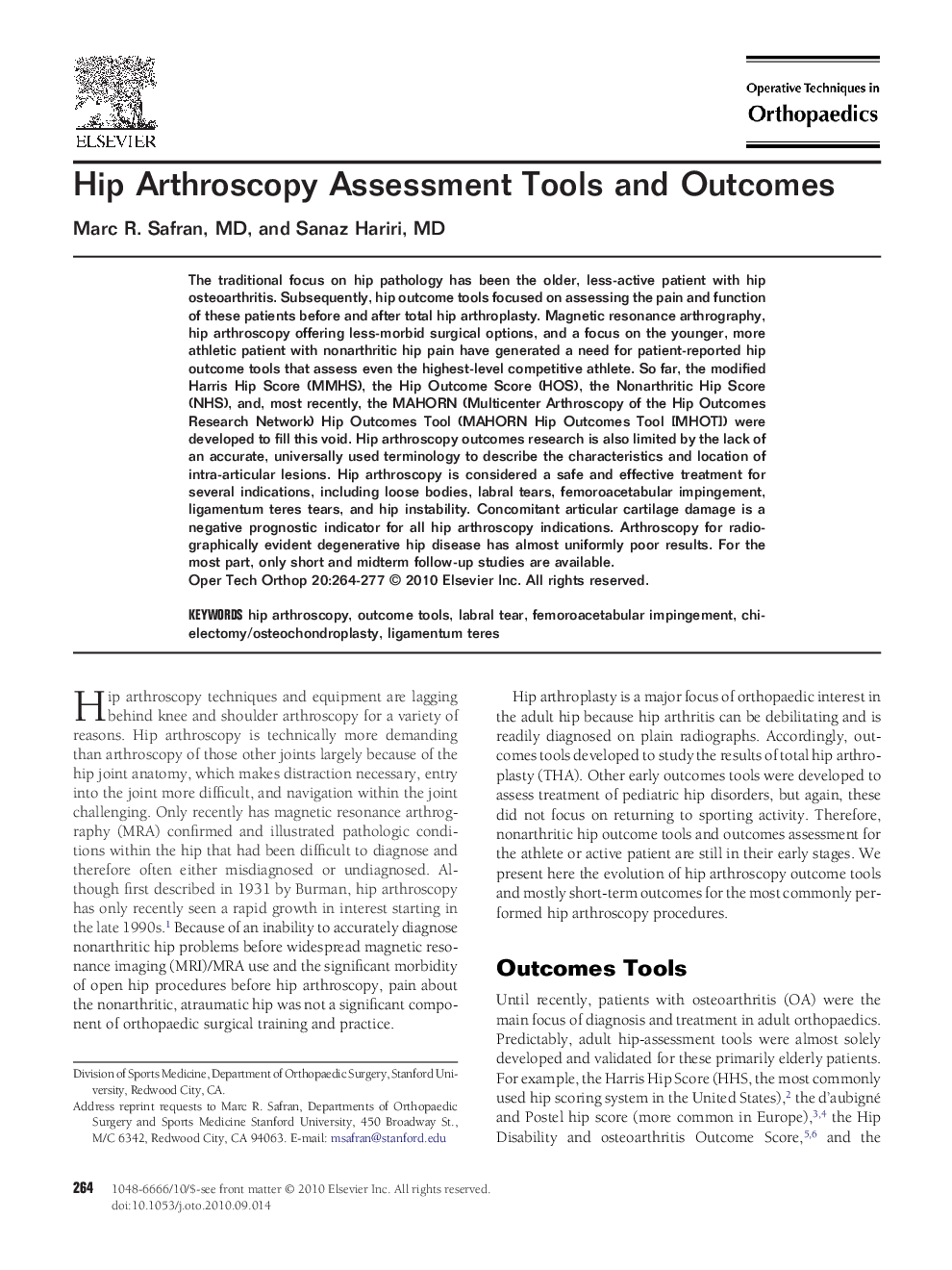| Article ID | Journal | Published Year | Pages | File Type |
|---|---|---|---|---|
| 4079064 | Operative Techniques in Orthopaedics | 2010 | 14 Pages |
The traditional focus on hip pathology has been the older, less-active patient with hip osteoarthritis. Subsequently, hip outcome tools focused on assessing the pain and function of these patients before and after total hip arthroplasty. Magnetic resonance arthrography, hip arthroscopy offering less-morbid surgical options, and a focus on the younger, more athletic patient with nonarthritic hip pain have generated a need for patient-reported hip outcome tools that assess even the highest-level competitive athlete. So far, the modified Harris Hip Score (MMHS), the Hip Outcome Score (HOS), the Nonarthritic Hip Score (NHS), and, most recently, the MAHORN (Multicenter Arthroscopy of the Hip Outcomes Research Network) Hip Outcomes Tool (MAHORN Hip Outcomes Tool [MHOT]) were developed to fill this void. Hip arthroscopy outcomes research is also limited by the lack of an accurate, universally used terminology to describe the characteristics and location of intra-articular lesions. Hip arthroscopy is considered a safe and effective treatment for several indications, including loose bodies, labral tears, femoroacetabular impingement, ligamentum teres tears, and hip instability. Concomitant articular cartilage damage is a negative prognostic indicator for all hip arthroscopy indications. Arthroscopy for radiographically evident degenerative hip disease has almost uniformly poor results. For the most part, only short and midterm follow-up studies are available.
